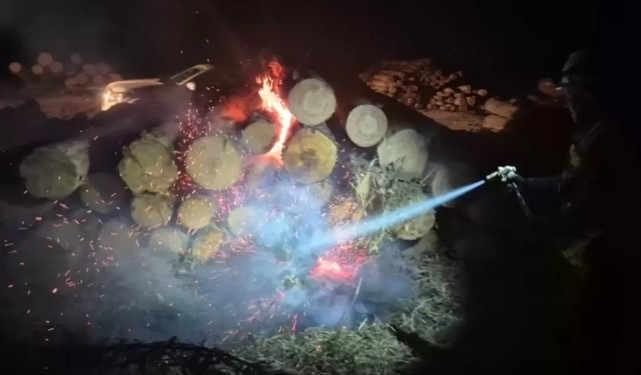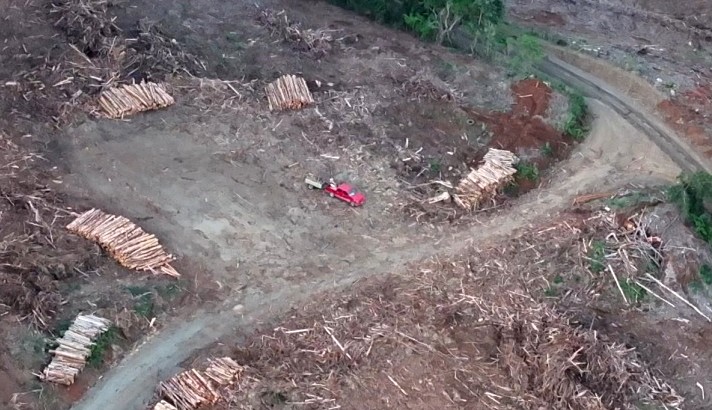In the midst of darkness, over 200 brigade members remain alert to respond in firefighting and protection
ARAUCO's Night Brigades
In the midst of darkness, over 200 brigade members remain alert to respond in firefighting and the protection of people
In the darkness of the forest, while most people rest, a group of men begins their work shift. This is the lesser-known work of the night forest brigades, who are part of an innovative firefighting and disaster response strategy implemented this season by ARAUCO.
The night brigades consist of 280 specially trained individuals to carry out firefighting, containment, and extinguishing tasks under low visibility conditions and without aerial support.
Mauricio Leiva, Public Affairs Manager at ARAUCO, explained that these highly specialized teams play a crucial role, as nighttime offers higher humidity and lower winds, creating a window to control fires that could not be subdued during the day.
Each night brigade is made up of eight members. They move through the darkness along rural roads in a firefighting vehicle equipped to access high-risk areas with fire threats or active wildfires.
The goal of each operation is the same: to complement the firefighting efforts of daytime brigades and advance when other resources, such as planes and helicopters, cannot be used—helping to safeguard people and the environment.
Other nighttime resources
Alongside these brigades, ARAUCO deploys other nighttime resources, including 24-hour surveillance towers and detection cameras, a nighttime dispatch center, and ground machinery like skidders. This ensures technical and logistical support, along with a full team working to combat fires that started during the day and to immediately control new outbreaks at night—which, if not addressed promptly, could grow and become uncontrollable by the next day.
More technology to fight fires
During the first weeks of summer, ARAUCO launched preventive measures, including the deployment of 1,400 brigade members and the critical work of the Community Prevention Network.
Additionally, there are 76 specialized firefighting vehicles equipped with 2,700 to 8,000 liters of high-pressure water and fire-retardant foam.
Ground operations are supported by an air fleet, including: 1 mega helicopter, 3 large helicopters, 17 light helicopters, 11 planes, and three coordination planes with optical-thermal cameras.
On-the-ground observation is another key strategy, serving as the first alert in emergencies. For this, specially trained personnel conduct shift-based monitoring across ARAUCO's 55 towers, involving 337 operators and eight supervisors—including over 40 women.
This effort is enhanced by an automated fire detection system to improve initial response, using images from a high-definition camera network.
These devices are installed on hills to automatically detect wildfires and operate with the FireHawk system, totaling 82 units integrated with the 55-tower network.
Monitoring high-risk areas, improving detection effectiveness, resource dispatch, and asset visibility are all part of the critical work to detect fires in a timely manner.

















